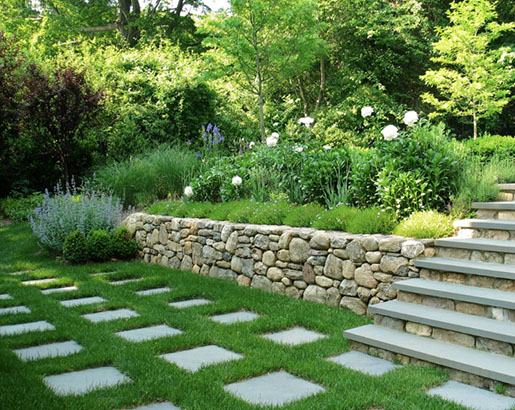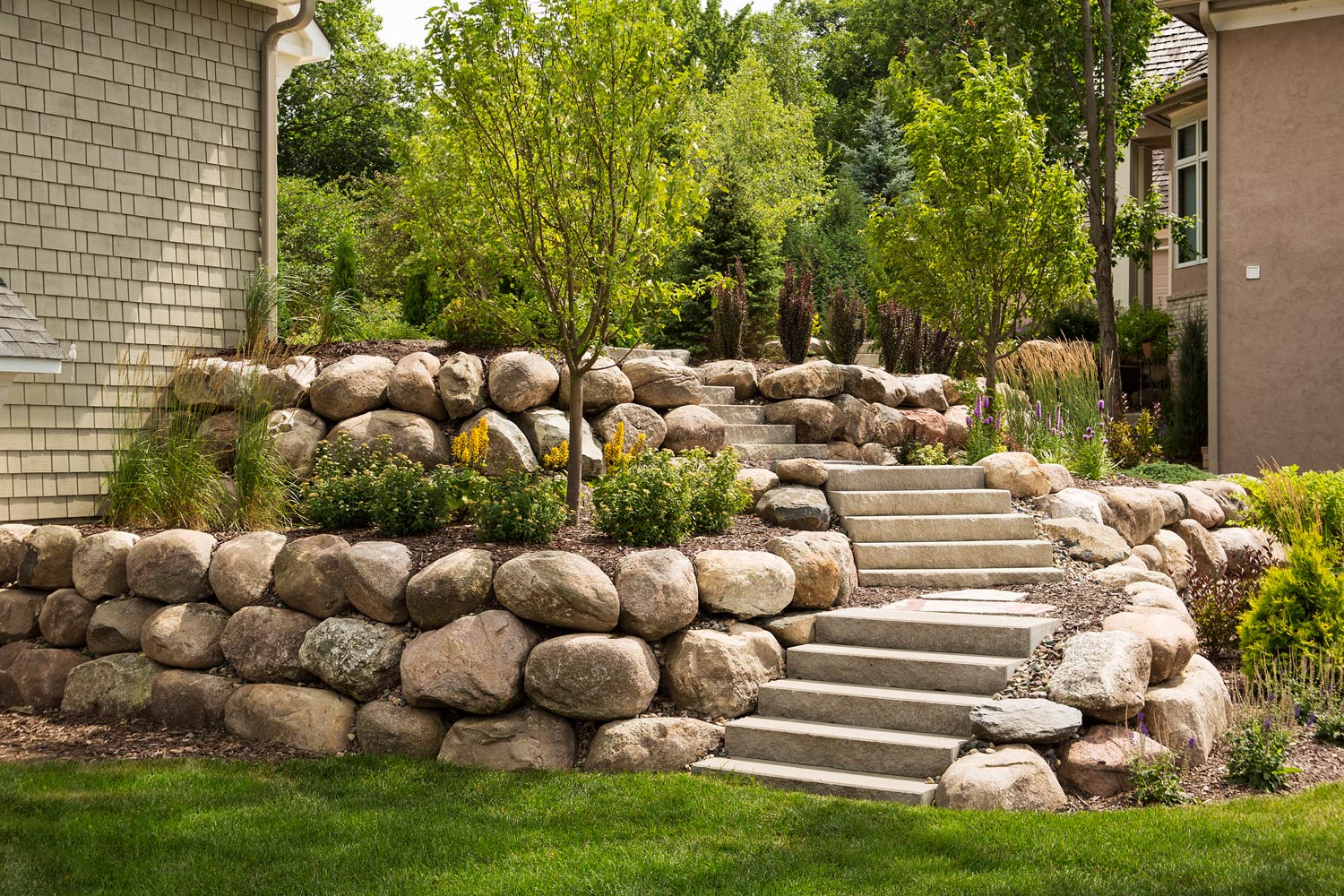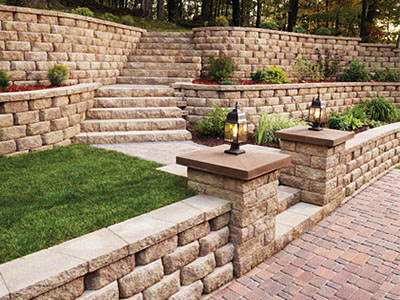Annapolis Retaining Wall And Garden Wall Construction Can Be Fun For Everyone


A wall for holding in location a mass of earth or such, as beside a terrace or excavation. A maintaining wall surface is a structure made as well as built to resist the side stress of soil, when there is a desired change in ground altitude that goes beyond the angle of repose of the dirt.
However the term typically refers to a cantilever maintaining wall, which is a freestanding framework without lateral support at its top. These are cantilevered from a footing and rise over the grade on one side to maintain a greater level quality on the contrary side - Annapolis Retaining Wall and Garden Wall Construction. The walls need to withstand the side stress generated by loosened soils or, in some situations, water stress.

The wedge is specified as the dirt which extends beyond the failure aircraft of the dirt type present at the wall surface site, and can be calculated when the dirt rubbing angle is understood. As the obstacle of the wall surface boosts, the dimension of the sliding wedge is lowered. This decrease reduces the pressure on the maintaining wall.

This develops lateral planet pressure behind the wall surface which relies on the angle of inner rubbing (phi) and the natural stamina (c) of the retained material, as well as the instructions as well as size of motion the retaining framework undergoes. Side earth pressures are no on top of the wall surface and in uniform ground boost proportionally to an optimum value at the most affordable deepness.
The Facts About Annapolis Retaining Wall And Garden Wall Construction Uncovered

Likewise, any kind of groundwater behind the wall that is not dissipated by a drainage system triggers hydrostatic stress on the wall surface. The complete stress or drive might be presumed to act at one-third from the most affordable depth for lengthwise stretches of consistent height. Annapolis Retaining Wall and Garden Wall Construction. It is necessary to have correct water drainage behind the wall in order to limit the stress to the wall surface's style worth.

Dry-stacked gravity wall surfaces are somewhat flexible and also do not call for a stiff footing. Previously in the 20th century, taller keeping walls were often gravity wall surfaces made from huge masses of his comment is here concrete or rock. Today, taller maintaining walls are significantly developed as composite gravity walls such as: geosynthetics such as geocell mobile arrest planet retention or with precast dealing with; gabions (piled steel cord baskets loaded with rocks); crib walls (cells constructed up log cabin design from precast concrete or timber as well as full of granular material).


Annapolis Retaining Wall And Garden Wall Construction Things To Know Before You Get This
For a quick estimate the product is usually driven 1/3 over ground, 2/3 underground, yet this Full Article might be altered relying on the environment. Taller sheet pile walls will require a tie-back support, or "dead-man" positioned in the soil a range behind the face of the wall, that is connected to the wall, usually by a wire or a rod.
Bored pile retaining walls are built by constructing a series of bored piles, continued by excavating away the excess dirt. Depending upon the project, the bored heap keeping wall surface may include a collection of planet anchors, strengthening light beams, soil enhancement operations and also shotcrete support layer. This construction strategy tends to be employed in scenarios where sheet loading is a legitimate building solution, but where the resonance or noise degrees created by a heap chauffeur are not appropriate.
Typically driven into the product with boring, anchors are then expanded at the end of the wire, either by mechanical methods or typically by injecting pressurized concrete, which broadens to develop a light bulb in the soil. Technically complex, this method is really useful where high tons are expected, or where the wall itself needs to be slim as well as would otherwise be too weak.
Benches are normally installed into a pre-drilled hole and after that grouted into location or drilled as well as grouted concurrently. They are generally set up untensioned at a slight descending disposition. An inflexible or flexible dealing with (usually splashed website link concrete) or isolated dirt nail heads may be utilized at the surface. A number of systems exist that do not be composed of simply the wall, yet minimize the planet pressure acting directly on the wall.